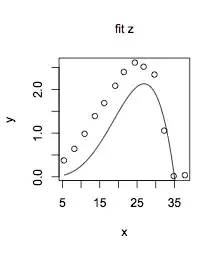Answering your questions briefly:
The bounds come from the Cumulative Distribution Function (CDF) of $p(y)$. I.e.,
$p(Y\leq y)=\int\limits_{-\infty}^yp(Y=\hat y)d\hat y$
The absolute value $\left | \frac{dz}{dy}\right |$ come from the change of variable. Check this for more details on how to proceed with a change of variable over probability distributions.
For a more detailed answer, check below:
We have that $z$ is uniformly distributed over (0,1), thus
$p(z)=\frac{1}{1-0}=1$
Then, by defining $z=h(y)$ we have that
$p(y)=p(z)\left | \frac{d}{dy}z\right |=1\left | \frac{d}{dy}h(y) \right |$
We want to determine what the change of variable function should look like, thus we isolate it by integrating $p(y)$. We proceed by noticing that the function $h(y)$ is either monotonically increasing or decreasing. Thus, if it is increasingly monotonic we have that the right-hand side of the above equation is equal to
$\int\limits_{-\infty}^y\frac{d}{d\hat y}h(\hat y)d\hat y$
$=h(y)-\underset{n\to -\infty}{\lim}h(n)+C$
$=h(y)-0+C$
$=h(y)+C$
where the bounds make the left-hand side be a CDF on $y$ and $\underset{n\to -\infty}{\lim}h(y)=0$, given that $h(y)$ is monotonically increasing and $h(y)=z$ and $z\in (0,1)$.
In the case of a decreasingly monotonic function we have
$-\int\limits_{-\infty}^y\frac{d}{d\hat y}h(\hat y)d\hat y$
$=-(h(y)-\underset{n\to -\infty}{\lim}h(n))+C$
$=\underset{n\to -\infty}{\lim}h(n)-h(y)+C$
$=1-h(y)+C$
We can set the constant values $C:=0$, and thus we have that
\begin{equation}
h(y)=\begin{cases}
\int\limits_{-\infty}^yp(\hat y)d\hat y, & h(y) \text{ is monotonically increasing} \\
1-\int\limits_{-\infty}^yp(\hat y)d\hat y, & h(y) \text{ is monotonically decreasing}
\end{cases}
\end{equation}
Thus, our choice of $h(y)$ can be any of these options.
Hope this helps.
